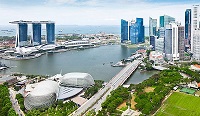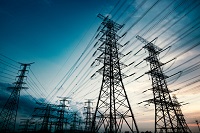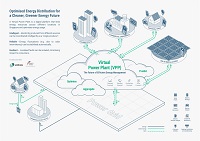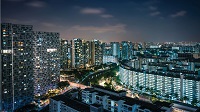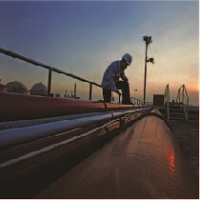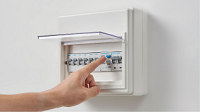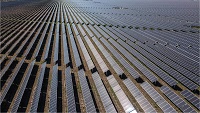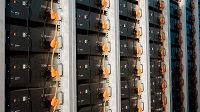We speak with Ryan Wong, General Manager (Special Projects) and Tan Hung Khing, General Manager (Transmission and Regional Projects) at SP Group to find out what it takes to bring this large-scale infrastructural project from vision to reality.
Have you ever walked past an electricity substation and wondered what it does?
An electricity substation is a key part of the electricity network, typically found above ground level. It serves two main purposes: first, lowering high-voltage electricity from the power plants to a safe level for homes and businesses. Second, it also manages the flow of electricity, ensuring everyone gets the power they need.
At the southern part of island near Labrador Park, Singapore welcomes a large scale 230kV underground electrical substation with a 34-storey commercial tower sitting atop it – the first such integrated development in Southeast Asia.
While the Energy Market Authority (EMA) oversees the overall power system, SP PowerGrid manages the transmission and distribution of the power network including this underground substation. Occupying an area of about four football fields, the facility will serve the electricity needs of the south-western part of Singapore to areas like Alexandra, Clementi, Keppel, Pasir Panjang and the Science Park district.
The first large-scale underground substation in Southeast Asia and Singapore
The idea of going underground was first mooted during SP PowerGrid’s discussions with the Urban Redevelopment Authority as early as 2014, in line with Singapore’s urban renewal plans to optimise land use.
“The Labrador substation was due to be renewed as part of our infrastructure renewal process. This presented a perfect opportunity for us to explore the possibility of moving it underground,” Ryan shared.
“This is considered a pilot project that integrates a standalone 230 kV underground substation with a mixed-use commercial building above it. While similar projects exist in other countries like Australia, China, and Japan, this is the first of its kind in Singapore,” Hung Khing added.
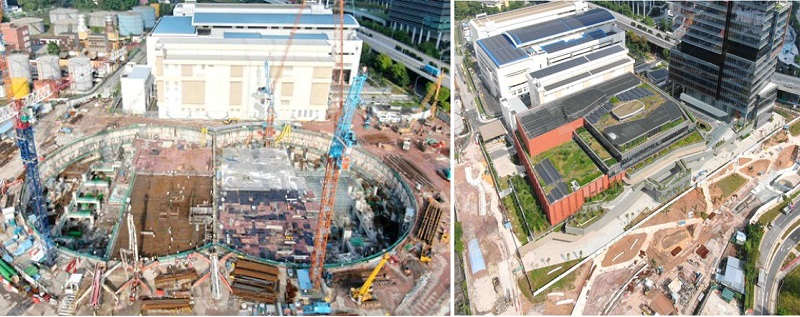
Fun fact: The total volume of concrete used for the base of the substation is equivalent to filling 10 Olympic-sized swimming pools.
While there are advantages of going underground in land-scarce Singapore, Ryan explained that there were considerable challenges involved in the construction process which started in early 2019.
Overcoming Construction Challenges through Meticulous Planning and Teamwork
“It is definitely more complex to build a substation underground. We have to consider the existing infrastructure around the area and to ensure our construction work does not affect their structural integrity, how to safely navigate the big equipment in small spaces, how to carry out maintenance of equipment in the future, as well as consider risks such as flooding or fire,” Ryan said.
Building an electricity substation underground instead of above ground poses its own unique challenges, Hung Khing pointed out.
“The electrical equipment that we bring in had to be suitable for underground use and these are typically different from those used above ground. Furthermore, we needed to plan how we could maintain these pieces of equipment in an underground setting.”
Transporting such equipment was also a mammoth task. “For example, we had to move a 180-tonne transformer – as heavy as 90 cars – into its custom-built underground space. This required careful teamwork and multiple practice sessions to get it into place successfully.”
Unlike above ground substations that can be naturally ventilated, the team had to design and install special water-cooling systems to cool down the gas-insulated transformers that may get overheated easily underground. “As you know, electricity and water don’t mix well. To have water-cooling systems in the facility means we have to be extra careful to keep the place safe and prevent any incidents,” Hung Khing quipped.
Another challenge that the team faced was dealing with safety restrictions during the COVID-19 pandemic, which occurred during a crucial phase of the construction. “At that time, most of our workers were confined to their dormitories, and we weren’t sure when they could return to work. While this naturally affected the project’s progress and our workers’ productivity. we studied the design and construction methods for the subsequent construction phases to mitigate the overall impact on the project,” Ryan recounted.
To execute such a large-scale project with many complex elements, close collaboration with partners is essential as well.
Hung Khing shared that the team worked closely with various agencies, from taking over the land from the Singapore Land Authority to coordinating with the Land Transport Authority to divert roads when bringing in the large electrical transformers and other equipment.
A Job Well Done
With nearly a 2,000 strong workforce during the peak of construction and multiple stakeholders involved throughout the entire process, from planning to construction to operations, both Ryan and Hung Khing expressed a deep sense of satisfaction at its successful delivery.
“A project of this size and complexity was not easy to pull off, especially during the COVID pandemic. But with great teamwork, we managed to get it done,” Ryan reflected. “Seeing a plan on paper come to life has been incredibly gratifying.”
Hung Khing agreed, “It was the esprit de corps between us and our partners – the teamwork and support we had from our partners throughout the project – that made this all possible.”
